This article was co-authored by Alan O. Khadavi, MD, FACAAI and by wikiHow staff writer, Danielle Blinka, MA, MPA. Dr. Alan O. Khadavi is a Board Certified Allergist and a Pediatric Allergy Specialist based in Los Angeles, California. He holds a BS in biochemistry from the State University of New York (SUNY) at Stony Brook and an MD from the State University of New York Health Science Center at Brooklyn. Dr. Khadavi completed his pediatric residency at Schneider Children’s Hospital in New York, and then went on to complete his allergy and immunology fellowship and pediatric residency at Long Island College Hospital. He is board certified in adult and pediatric allergy/immunology. Dr. Khadavi is a Diplomate of the American Board of Allergy and Immunology, a Fellow of the American College of Allergy, Asthma & Immunology (ACAAI), and a member of the American Academy of Allergy, Asthma & Immunology (AAAAI). Dr. Khadavi's honors include Castle Connolly’s list of Top Doctors 2013-2020, and Patient Choice Awards "Most Compassionate Doctor" in 2013 & 2014.
There are 8 references cited in this article, which can be found at the bottom of the page.
This article has been viewed 118,464 times.
Many conditions cause you to rely on an inhaler to keep your airways open, including asthma, cystic fibrosis, chronic obstructive pulmonary disease (COPD), allergies, and anxiety. Depending on your condition, the type of inhaler you're prescribed can vary. While inhalers may seem tricky, they're easy to use with a little practice. Soon you'll be able to use your inhaler when your symptoms arise. Always read the instructions that come with your inhaler before using.
Steps
Using a Metered Dose Inhaler With or Without a Spacer
-
1Remove the cap. The cap is a small covering located over the mouthpiece of the inhaler to prevent foreign objects from getting in the inhaler. Pull the cap to remove it and set it in a safe place.[1]
- An uncapped inhaler can pick up germs and debris, which you will then pump into your lungs.
- Make sure that you don't lose your cap while you're using your inhaler.
-
2Inspect the inhaler. The inhaler should be clean, especially the mouthpiece. Remove the cap and check the inside and outside of the mouthpiece. Check the expiration date to make sure that it can still be used. Wipe any grime or debris off the inhaler with a dry tissue or cotton swab.[2]
- If the mouthpiece is dirty, wipe it down with rubbing alcohol, and let it dry.
Advertisement -
3Hold the inhaler upright and shake it 5-10 times. Hold the inhaler in your hand with your index finger on top of the canister. The mouthpiece should be on the bottom with the top of the canister pointing up. Quickly move your inhaler up and down by pumping your forearm or wrist.[3]
- If you haven't used it in a while, make sure that you prime it by pumping it until it sprays at full force. Don't worry about wasting medicine because an unprimed inhaler will not provide you a full dose, putting your breathing at risk. Instructions for priming vary, so know how many pumps it takes to prime yours.
-
4Prepare your spacer if you're using one. Take off the cap and look inside to make sure that there is no grime or debris inside the spacer. If there is, then try blowing it out. If you can't clear out the debris, you may need to wash your spacer.[4]
-
5Take a deep breath. Breathe in through your mouth. Open your lungs to their maximum capacity, then hold the breath for just a second.[7]
-
6Tilt your head back. You only need to slightly tilt your head back. This will open your airways so that the medicine can easily flow into your lungs. If you bend your head too far back, you may cut off your throat instead of opening it, however.[8]
-
7Exhale slowly. Release the air from your lungs in preparation for inhaling your medicine from the inhaler.[9]
-
8Place the inhaler or the inhaler with the spacer in your mouth. The mouthpiece should sit above your tongue and between your teeth. Close your lips around it, and aim the spray hole at the back of your throat.[10]
- If you're using a spacer, the mouthpiece on the spacer goes in your mouth, and the mouthpiece of the inhaler fits in the other end of the spacer.[11]
- If you don't have a spacer and don't want to put the inhaler in your mouth, then you can hold it 1-2 inches in front of your mouth.
-
9Breathe in as you press down on the canister.[12] Begin inhaling slowly through your mouth as you press down on your inhaler. This will release a dose of your medicine. Keep the mouthpiece in your mouth to help keep the medicine in your mouth. Continue to breathe in for about three to five seconds. Try to push the medication back towards your lungs as you inhale.[13] This movement is known as a "puff."
- Only press the canister down once.
- If you're holding your inhaler 1-2 inches in front of your mouth, then close your mouth as soon as the dose is delivered.
- If you're using a spacer, some spacers have a whistle on them. Listen for the whistle. If you hear it, you are breathing in too rapidly. If you don't hear it, you are breathing in at an acceptable rate.
-
10Hold your breath and count to 10. Your medicine needs time to work, and exhaling too quickly can allow the medicine to escape. You should aim to hold the medicine in your mouth for at least ten seconds, but try to see if you can wait up to a minute.[14]
- You only have to count to ten on breaths you take from your inhaler.
-
11Remove the mouthpiece from your mouth. Exhale slowly and deeply through your mouth, and then resume breathing normally. Rinse your mouth with water thoroughly after using the inhaler. Gargle, then spit the water out. [15]
- If you're supposed to take two puffs from your inhaler, wait one minute before repeating the process.
- Continue to use your inhaler as directed by your doctor. In general, most people take one or two puffs every four to six hours or as needed.
- It's especially important to rinse your mouth if your medication is steroid-based because the medicine can cause a secondary yeast infection in the mouth called thrush. Rinsing your mouth after use will help prevent this.[16]
Using a Dry Powder Inhaler
-
1Keep your dry powder inhaler (DPI) dry. Your DPI may get ruined in a humid or moist environment because the medicine becomes clumpy, clogging the inhaler. To prevent your medicine from clumping, don't store your DPI in the bathroom or in an area without air conditioning. Your breath also contains moisture, so it's also important that you don't exhale into the inhaler.
-
2Remove the cap. The cap protects your inhaler from becoming dirty or contaminated. When you're using the inhaler, make sure to put your cap down somewhere safe so that you don't lose it. Depending on what kind of inhaler you have, the cap will look different.[17]
- If your inhaler looks like an upright tube - called a “rocket” inhaler - then the cap will cover the length of the inhaler. It may be a different color than the base.[18]
- If you have a diskus inhaler - called a “flying saucer” inhaler - you will remove the cap by placing your thumb on the thumb grip and pressing away from you. The cap will slide away to remove the mouthpiece.[19]
-
3Load your dose of medicine. The medicine is already in the inhaler, but with a DPI you must release it into the delivery chamber before you can use it. This keeps your medicine dry. Depending on whether you have a rocket or a diskus, how you load the inhaler will differ.
- Do not shake your inhaler.
- If you have a rocket inhaler, twist the base as far to the right as it will go, and then as far to the left as it will go. You will hear a click when the medicine is loaded.[20]
- If you have a diskus inhaler, slide the lever away from you until it clicks. The click tells you that your medicine has properly loaded.[21]
- If your model is a twisthaler inhaler, then the medicine will load when you take off the cap. There is no need to do anything else.[22]
- If you're still having trouble, then check with the directions for your model because DPIs vary more in how they're used compared with other inhalers.
-
4Clear your airways. Stand up or sit up straight with your head tilted slightly back.[23]
-
5Take a deep breath. While holding your inhaler away from your mouth, inhale deeply. Then exhale, completely emptying your lungs.[24]
- Make sure that you do not exhale into the inhaler as this can ruin your dose.
-
6Put the mouthpiece of the inhaler into your mouth. The mouthpiece should be between your teeth and your tongue. Close your lips around the mouthpiece to create a seal.[25]
-
7Take a deep breath to inhale the medicine. You do not need to press anything because the medicine is ready to be inhaled. Inhale as deeply as you can so that the medicine is able to get into your lungs.[26]
-
8Hold your breath to keep in the medicine. Leave the inhaler in your mouth while you count to ten.[27]
-
9Remove the inhaler from your mouth. Before you exhale, remove the inhaler and turn your face away from it. Let out your breath and then breath normally.[28]
-
10Close the inhaler. Put the cap back on your rocket or twisthaler inhaler or slide the cap shut if you're using a diskus inhaler.[29]
- If you are supposed to take a second dose, repeat steps 3-10 to deliver a second dose.
-
11Rinse out your mouth. Gargle with water to remove any excess medicine that might remain in your mouth to prevent an infection from developing.[30]
Expert Q&A
-
QuestionDo you hold your breath when using an inhaler?
 Alan O. Khadavi, MD, FACAAIDr. Alan O. Khadavi is a Board Certified Allergist and a Pediatric Allergy Specialist based in Los Angeles, California. He holds a BS in biochemistry from the State University of New York (SUNY) at Stony Brook and an MD from the State University of New York Health Science Center at Brooklyn. Dr. Khadavi completed his pediatric residency at Schneider Children’s Hospital in New York, and then went on to complete his allergy and immunology fellowship and pediatric residency at Long Island College Hospital. He is board certified in adult and pediatric allergy/immunology. Dr. Khadavi is a Diplomate of the American Board of Allergy and Immunology, a Fellow of the American College of Allergy, Asthma & Immunology (ACAAI), and a member of the American Academy of Allergy, Asthma & Immunology (AAAAI). Dr. Khadavi's honors include Castle Connolly’s list of Top Doctors 2013-2020, and Patient Choice Awards "Most Compassionate Doctor" in 2013 & 2014.
Alan O. Khadavi, MD, FACAAIDr. Alan O. Khadavi is a Board Certified Allergist and a Pediatric Allergy Specialist based in Los Angeles, California. He holds a BS in biochemistry from the State University of New York (SUNY) at Stony Brook and an MD from the State University of New York Health Science Center at Brooklyn. Dr. Khadavi completed his pediatric residency at Schneider Children’s Hospital in New York, and then went on to complete his allergy and immunology fellowship and pediatric residency at Long Island College Hospital. He is board certified in adult and pediatric allergy/immunology. Dr. Khadavi is a Diplomate of the American Board of Allergy and Immunology, a Fellow of the American College of Allergy, Asthma & Immunology (ACAAI), and a member of the American Academy of Allergy, Asthma & Immunology (AAAAI). Dr. Khadavi's honors include Castle Connolly’s list of Top Doctors 2013-2020, and Patient Choice Awards "Most Compassionate Doctor" in 2013 & 2014.
Board Certified Allergist No, you don't. Always make sure you breathe in as you press down on your inhaler. Otherwise, you may not inhale all the medicine.
No, you don't. Always make sure you breathe in as you press down on your inhaler. Otherwise, you may not inhale all the medicine. -
QuestionWhat is a spacer?
 Alan O. Khadavi, MD, FACAAIDr. Alan O. Khadavi is a Board Certified Allergist and a Pediatric Allergy Specialist based in Los Angeles, California. He holds a BS in biochemistry from the State University of New York (SUNY) at Stony Brook and an MD from the State University of New York Health Science Center at Brooklyn. Dr. Khadavi completed his pediatric residency at Schneider Children’s Hospital in New York, and then went on to complete his allergy and immunology fellowship and pediatric residency at Long Island College Hospital. He is board certified in adult and pediatric allergy/immunology. Dr. Khadavi is a Diplomate of the American Board of Allergy and Immunology, a Fellow of the American College of Allergy, Asthma & Immunology (ACAAI), and a member of the American Academy of Allergy, Asthma & Immunology (AAAAI). Dr. Khadavi's honors include Castle Connolly’s list of Top Doctors 2013-2020, and Patient Choice Awards "Most Compassionate Doctor" in 2013 & 2014.
Alan O. Khadavi, MD, FACAAIDr. Alan O. Khadavi is a Board Certified Allergist and a Pediatric Allergy Specialist based in Los Angeles, California. He holds a BS in biochemistry from the State University of New York (SUNY) at Stony Brook and an MD from the State University of New York Health Science Center at Brooklyn. Dr. Khadavi completed his pediatric residency at Schneider Children’s Hospital in New York, and then went on to complete his allergy and immunology fellowship and pediatric residency at Long Island College Hospital. He is board certified in adult and pediatric allergy/immunology. Dr. Khadavi is a Diplomate of the American Board of Allergy and Immunology, a Fellow of the American College of Allergy, Asthma & Immunology (ACAAI), and a member of the American Academy of Allergy, Asthma & Immunology (AAAAI). Dr. Khadavi's honors include Castle Connolly’s list of Top Doctors 2013-2020, and Patient Choice Awards "Most Compassionate Doctor" in 2013 & 2014.
Board Certified Allergist A spacer is a chamber that attaches to your inhaler to make it easier to breathe in the medication.
A spacer is a chamber that attaches to your inhaler to make it easier to breathe in the medication.
Warnings
- Don't put your inhaler in water to see if it's empty. This doesn't work and will ruin the inhaler.⧼thumbs_response⧽
References
- ↑ https://www.nhlbi.nih.gov/files/docs/public/lung/asthma_tipsheets.pdf
- ↑ http://www.cdc.gov/asthma/inhaler_video/default.htm
- ↑ https://www.nhlbi.nih.gov/files/docs/public/lung/asthma_tipsheets.pdf
- ↑ https://www.nhlbi.nih.gov/files/docs/public/lung/asthma_tipsheets.pdf
- ↑ https://www.nationalasthma.org.au/living-with-asthma/resources/patients-carers/factsheets/spacer-use-and-care
- ↑ https://www.nationalasthma.org.au/living-with-asthma/resources/patients-carers/factsheets/spacer-use-and-care
- ↑ https://www.nhlbi.nih.gov/files/docs/public/lung/asthma_tipsheets.pdf
- ↑ http://www.upmc.com/patients-visitors/education/breathing/pages/use-inhalers.aspx
- ↑ https://www.nhlbi.nih.gov/files/docs/public/lung/asthma_tipsheets.pdf
- ↑ https://www.healthychildren.org/English/health-issues/conditions/allergies-asthma/pages/MDI-Closed-Mouth.aspx
- ↑ https://www.cdc.gov/asthma/pdfs/Inhaler_Spacer_FactSheet.pdf
- ↑ Alan O. Khadavi, MD, FACAAI. Board Certified Allergist. Expert Interview. 29 July 2020.
- ↑ https://www.nhlbi.nih.gov/files/docs/public/lung/asthma_tipsheets.pdf
- ↑ https://www.nlm.nih.gov/medlineplus/ency/patientinstructions/000042.htm
- ↑ https://www.nhlbi.nih.gov/files/docs/public/lung/asthma_tipsheets.pdf
- ↑ https://www.nhlbi.nih.gov/files/docs/public/lung/asthma_tipsheets.pdf
- ↑ https://www.nhlbi.nih.gov/files/docs/public/lung/asthma_tipsheets.pdf
- ↑ https://www.nhlbi.nih.gov/files/docs/public/lung/asthma_tipsheets.pdf
- ↑ http://www.upmc.com/patients-visitors/education/breathing/pages/use-inhalers.aspx
- ↑ https://www.nhlbi.nih.gov/files/docs/public/lung/asthma_tipsheets.pdf
- ↑ https://www.nhlbi.nih.gov/files/docs/public/lung/asthma_tipsheets.pdf
- ↑ https://www.nhlbi.nih.gov/files/docs/public/lung/asthma_tipsheets.pdf
- ↑ https://www.nhlbi.nih.gov/files/docs/public/lung/asthma_tipsheets.pdf
- ↑ https://www.nhlbi.nih.gov/files/docs/public/lung/asthma_tipsheets.pdf
- ↑ https://www.nhlbi.nih.gov/files/docs/public/lung/asthma_tipsheets.pdf
- ↑ https://www.nhlbi.nih.gov/files/docs/public/lung/asthma_tipsheets.pdf
- ↑ https://www.nhlbi.nih.gov/files/docs/public/lung/asthma_tipsheets.pdf
- ↑ https://www.nhlbi.nih.gov/files/docs/public/lung/asthma_tipsheets.pdf
- ↑ https://www.nhlbi.nih.gov/files/docs/public/lung/asthma_tipsheets.pdf
- ↑ https://www.nhlbi.nih.gov/files/docs/public/lung/asthma_tipsheets.pdf
About This Article
To use an inhaler, remove the small cap covering the mouthpiece, hold the inhaler upright, and shake it 5-10 times. Next, take a deep breath, tilt your head back slightly, and close your lips around the mouthpiece so that it's sitting above your tongue and between your teeth. Then, breathe in slowly as you press down on the canister to release the dose of medicine. Lastly, exhale slowly through your mouth before rinsing out your mouth with water! For tips on using a dry powder inhaler, read on!
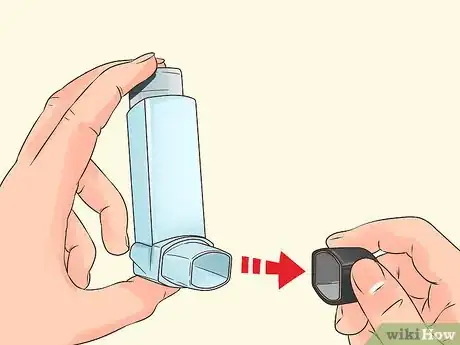

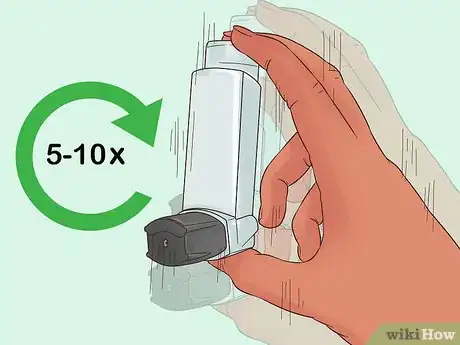
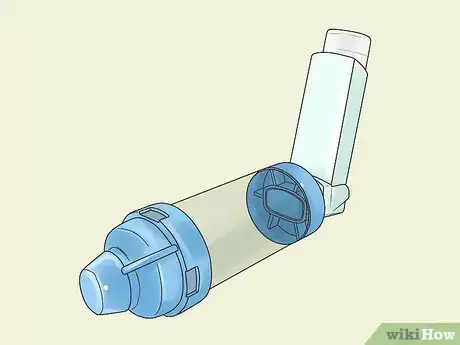


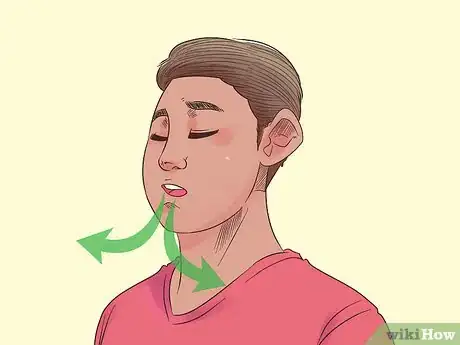
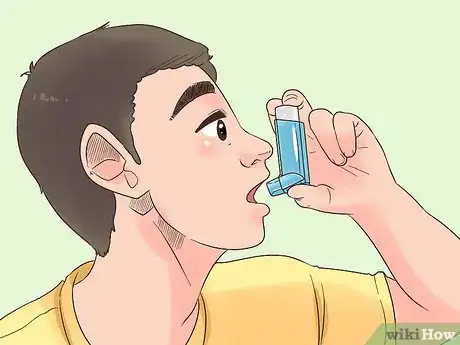


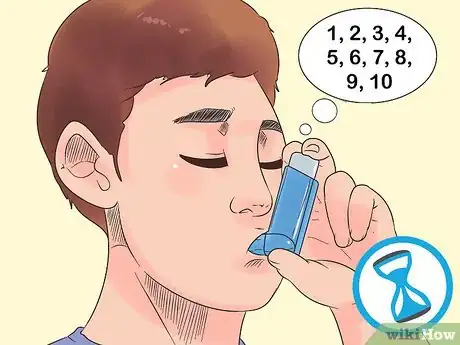


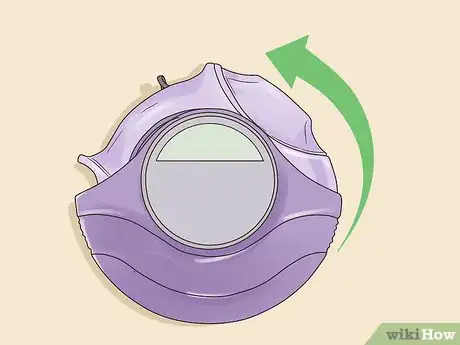
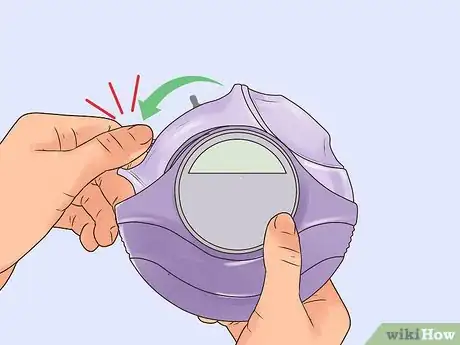



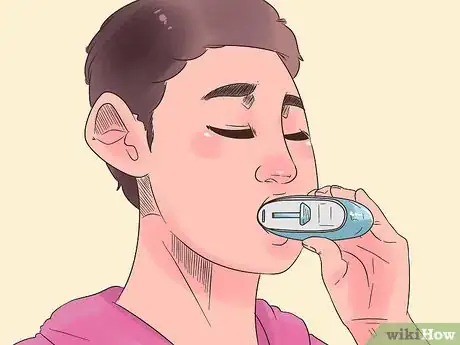
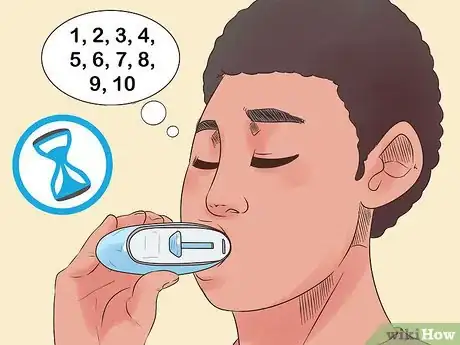

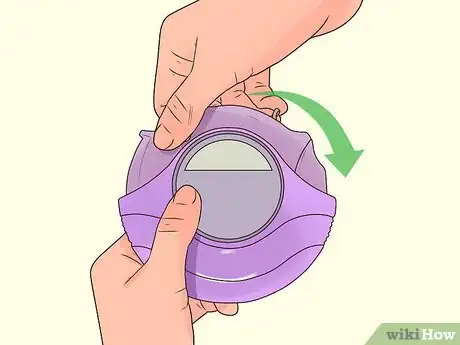

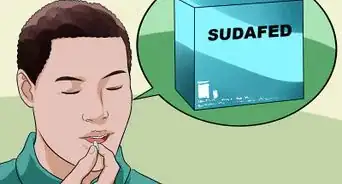
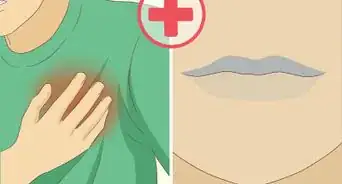

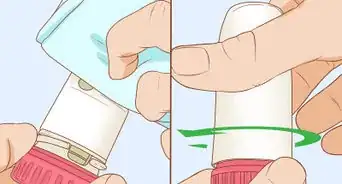
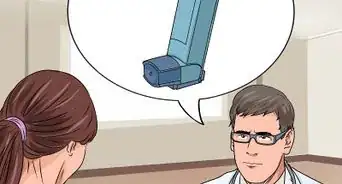
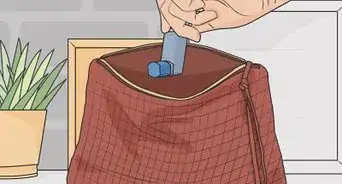









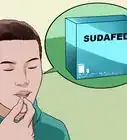
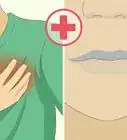





































Medical Disclaimer
The content of this article is not intended to be a substitute for professional medical advice, examination, diagnosis, or treatment. You should always contact your doctor or other qualified healthcare professional before starting, changing, or stopping any kind of health treatment.
Read More...